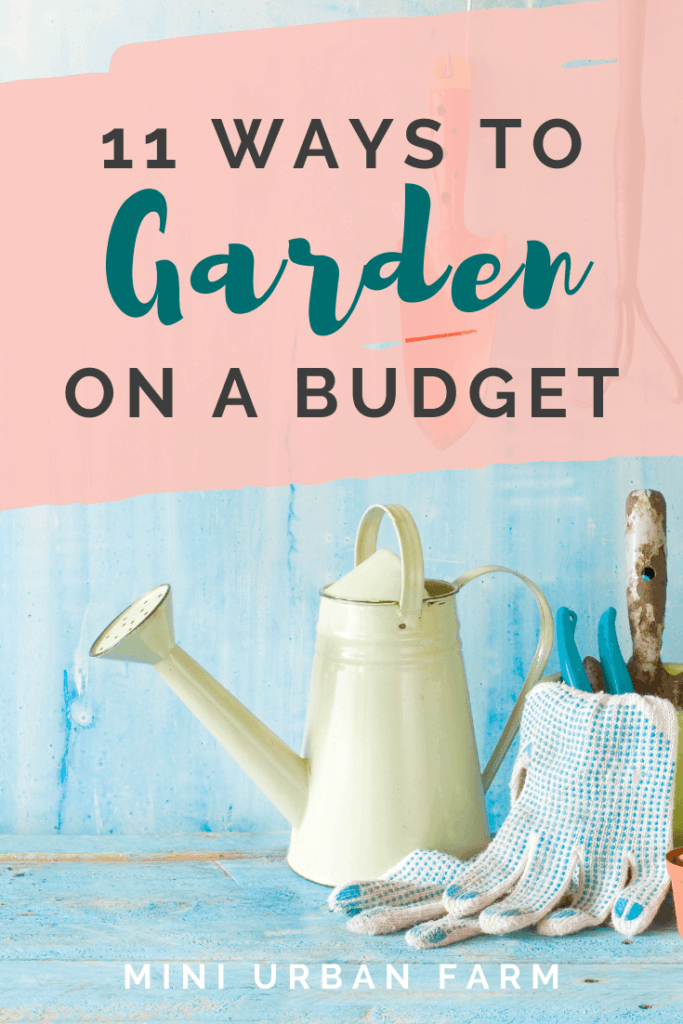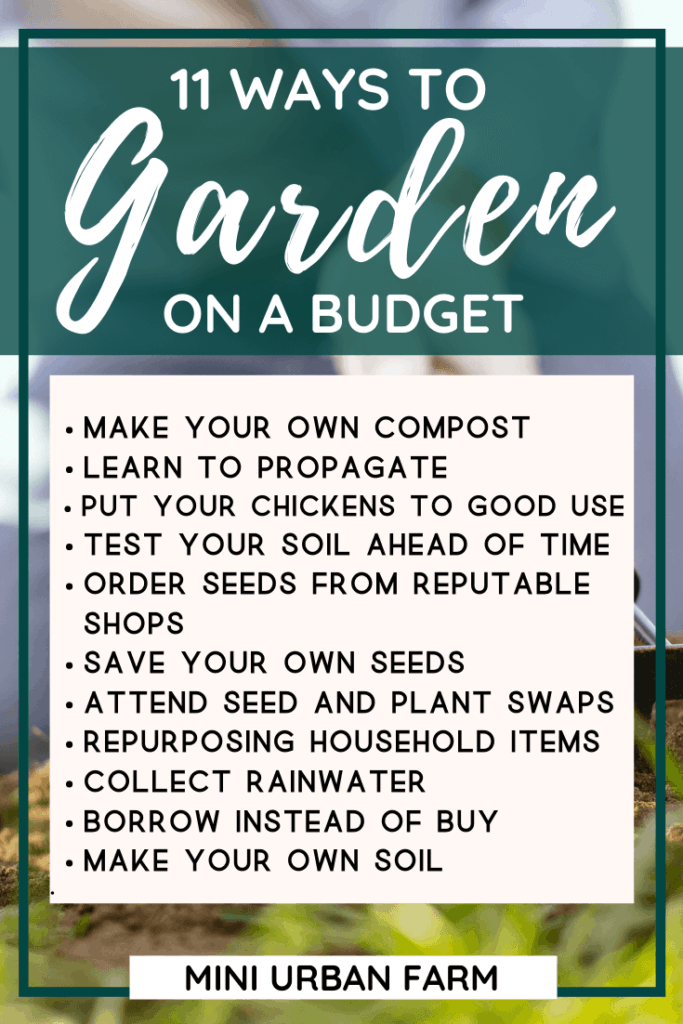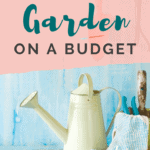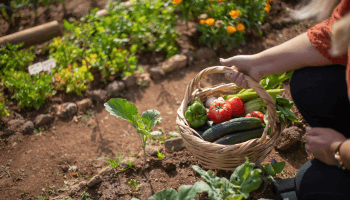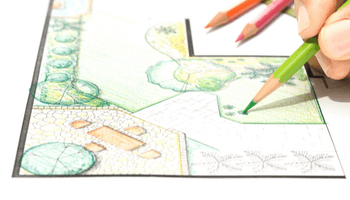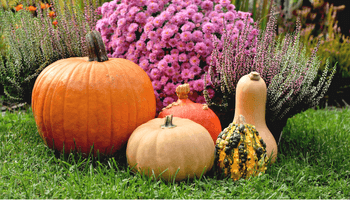Gardening is such an important part of our little urban homestead. Our garden actually provides all of the vegetables and herbs we eat throughout the year. But like anything in life, gardening can get very expensive very fast! I have been gardening for over 10 years now and in that time I’ve found a few surefire ways to garden on a budget that save me tons of money!
A few creative ways to garden on a budget include:
- Make your own compost
- Learn to propagate
- Put your chickens to good use
- Test your soil ahead of time
- Order seeds from reputable shops
- Save your own seeds
- Attend seed and plant swaps
- Repurposing household items
- Collect rainwater
- Borrow instead of buy
- Make your own soil
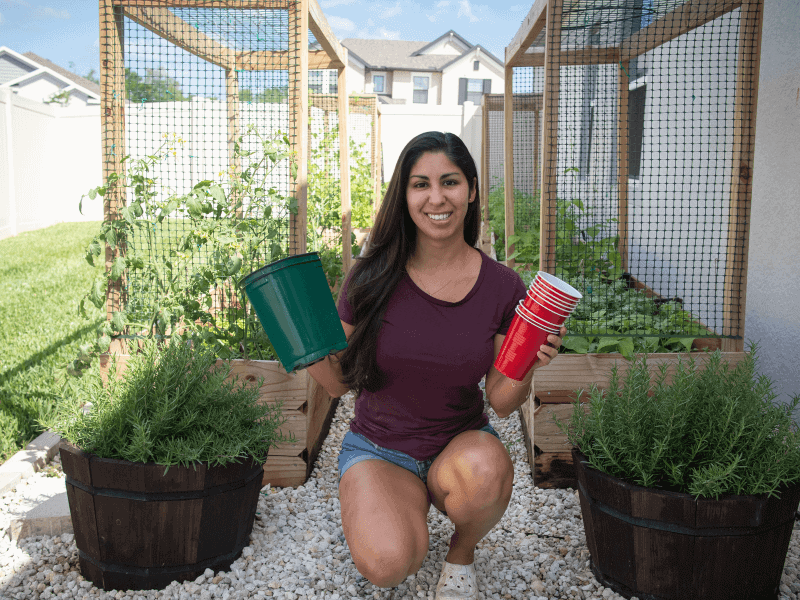
Disclosure: This post may contain affiliate links. If you purchase a product through one of our affiliate links we make a small commission from the sale at no extra cost to our readers.
1) Make your own compost
Good quality compost can do wonders for your garden.
But good quality organic compost can be very expensive at the gardening store. And for a large garden, this adds up quickly!
So one of the best ways I’ve found to reduce gardening costs and still provide my garden with great compost is to make my own!
And this is actually easier than you might think!
Instead of throwing away your kitchen scraps, save them for the backyard compost bin and put them to good use!
For the past few years I have kept a small air-tight container under my kitchen sink. And every time I’m cooking or chopping up vegetables I just add the scraps into this little bin.
About once per week I end up dumping the entire thing into my outdoor compost bin, and then every few months I end up with amazing compost ready to be added to my plants!
Some things you can add to your compost bin include:
- Vegetable scraps
- Fruit scraps
- Eggshells
- Used coffee grounds
- Grass and plant clippings
- Chicken, rabbit, or quail droppings
- Newspaper
- Cardboard
- Dry Leaves
- Straw
- Sawdust from untreated wood
- Chopped wood and bark chips
Things you should never add to your compost bin include:
- Diseased plant materials
- Weeds that would seed
- Dairy products
- Garlic
- Onion
- Citrus Peel
- Treated wood pieces
- Meat or meat by products
- Grease, oils, or fats
- Cat or dog feces
2) Learn to Propagate
Propagating your own herbs or plants can be very cost effective and reduce the need to buy plants.
Basically, propagating plants means taking cuttings from existing plants and rooting them to form new plants – sounds great right?!
At the beginning of spring there’s tons of new growth on my herb plants and I always take clippings to root!
Plus, if you live in an area with cold winters, you can take cuttings before winter sets in to root indoors until spring – giving you new free plants for the next season!
Using this technique I have managed to not buy new rosemary, thyme, mint, or oregano plants for years!
And I even sell some of the rooted cuttings to make up for the cost of my seeds for the season! It’s one of my favorite ways to make money gardening!
Steps to propagate herbs:
- Take cuttings of green branches and new growth
- Remove the lower leaves from cuttings, leaving only 2-3 sets of leaves at the top
- Dip the stem in rooting hormone (optional)
- Plant in good quality soil and deep water
- Check back once a week for new growth
3) Put your chickens to good use
Normally I would advise against letting your chickens loose in the garden.
These tiny raptors will destroy all plants with their pecking and scratching – leaving nothing but dirt and droppings where your garden once was!
There’s one exception to this advice, however.
Come spring time, when it’s time to clean up your garden or make new garden beds, chickens can be super useful and replace many heavy gardening tools.
So instead of buying rakes, shovels, and pitchforks to remove old plants and get rid of debris, simply letting your chickens do the job for you will save you tons of money!
Plus, as they eat they also poop – leaving your garden covered in nutrient-rich compost!
To put your chickens to good use, consider the following:
- Make sure all plants in your garden are chicken friendly
- Cover any plants you don’t want destroyed
- Let your chickens do their thing ahead of time, so their droppings can decompose before the next season
4) Test Your Soil Ahad of Time
There’s nothing worse than planting out your garden and having your plant die after a few weeks – believe me!
You have to start new seeds from scratch and figure out what went wrong.
But many times it’s not the lack of water, overwatering, or crop placement that is affecting your seedlings.
It’s the soil – more specifically the lack of nutrients.
You see, after each season you should figure out what amendments your soil needs. That’s because during the growing season your plants soak up the nutrients in the soil to produce leaves, flowers, and crops.
This is especially true for heavy-feeding crops like tomatoes.
At the end of the season, your soil might be depleted of its nutrients. Which means that when you plant out those new seedlings they might not survive.
So what should you do about it? Amend your soil?
Well, that’s step 2.
Step 1 is to test your soil – sounds complicated, I know. But it doesn’t have to be.
Using an at home soil testing kit can be a life saver! Especially if you use it before you amend your soil!
That way, you’re not wasting money on amendments you don’t need – or worse, adding in too much of one nutrient that can kill your plants!
Unfortunately I had to learn this the hard way, but testing your soil can actually save you money – and headaches!
Psst…want to fast track your garden? Get access to my FREE gardening resource library and start maximizing your garden today!
5) Order seeds from reputable shops
It’s no secret that growing from seed will save you tons of money in the short term.
I mean, a pack of six lettuce starts at the nursery will cost you anywhere between $4-7, whereas a pack of 200 or more lettuce seeds costs only $2 -3.
So mathematically speaking, growing from seeds makes logical sense.
But think about this – after a while, a seed’s germination rate will decrease.
So if that pack of seeds at the local hardware store has been sitting in sub-optimal conditions for the past year or two, there’s a good chance that your germination rate on those seeds will be much lower than you anticipate.
And I’m definitely guilty of it.
I walk into the big box store and flock right to the seed displays, gathering all the colorful varieties of tomatoes and new types of lettuces I see.
But then a few weeks later those same seeds are not sprouting.
Do yourself a favor and always order your seeds from companies that are dedicated to growing seeds. That ensures that they are kept in cool, dry conditions and that your seeds will have a high germination rate.
To see which seed companies I order from, you can check out my gardening resources page.
6) Save your own seeds
Saving seeds from the vegetables in your current garden is an excellent way to reduce the cost of seeds for next season!
I used to think that saving seeds was difficult, but I was definitely wrong!
Now, every time I cut open a zucchini or make butternut squash soup, I set aside the seeds to dry and then put them in a small pouch labeled with the year and variety.
Plus, most vegetables have tons of seeds inside that you can use!
One butternut squash has over 30 seeds inside, so you only need to do this once for every type of vegetable you want to save seeds from!
7) Attend seed and plant swaps
We already talked about how saving seeds can reduce gardening expenses – but what about those new varieties that you want to grow?
Well you can go buy them at the store, or you can swap your seeds for them!
Yes, those seeds you saved at the end of last season can be traded for other crops you want to grow!
There are tons of seed swaps you can join, too!
A simple Google search will probably find tons of local seed swaps you can participate in.
Last season I participated in 3 swaps – one I found on YouTube, one from Facebook, and one that my friends and I always do!
And if you can’t find an actual seed swap, you can always find one or two people who will want to trade with you!
Trading seeds (or even seedlings) is a great way to not only reduce costs, but also to try new varieties!
This past season I ended up with tons of new bean varieties that I can’t wait to grow!
8) Repurpose Household Items for Pots
I know I’m not the only gardener out there who thinks the price of planters is ridiculous!
Especially ones that are decent looking.
What I’ve started doing instead is reusing and repurposing other items as planters and seed starting containers.
Red solo cups make the perfect seed starting pots – once you’ve drilled some drainage holes in them, of course.
And wooden wine crates are perfect for planting herbs!
Plus you can always “dress up” these repurposed items by gluing rope around the outside or painting them.
I’ve seen tons of items turned into places to plant seeds – even old shoes, gardening gloves, or 5 gallon buckets!
9) Collect rainwater
An often overlooked garden expense is the cost of city water.
And if you are watering your garden daily, which you probably should be, then you’re likely seeing a big chunk of your water bill going straight into the garden!
Collecting rainwater is an easy and inexpensive way to get rid of your gardening water bill! Plus rainwater can be used for more than just watering your plants.
At first, I was a bit overwhelmed with the whole rain barrel set up.
But I promise it’s not as hard as you think!
We got our rain barrel for $15 and the spigot for $3. Using a hose we already had, we connected everything and every time it rains the barrel fills up again.
It’s really not as hard as it once seemed!
Plus we use the rainwater for garden clean up, and to give water to our chickens! It’s a win-win!
10) Borrow not buy
If you’ve been gardening for a while, you know that you’ll probably need some tools for garden set up, maintenance, and clean up.
But if you’re into frugal gardening like I am, you’ll find that buying these tools to use only a few times per year might not be the best investment – especially if you’re just getting started!
Most people know at least a few neighbors, or have some friends and family close by. Chances are, these people would have no problem lending you their rake or wheelbarrow for a few hours!
In fact, we still don’t own a wheelbarrow – we just never needed to buy once since it’s easier – and cheaper – to borrow one from our neighbor!
But of course, if you’re going to borrow tools, try to offer something in return.
In our case, we trade ripe tomatoes for wheelbarrow time – or fresh eggs in exchange for checking on our chickens while we’re away on vacation.
This has been a great system to reduce expenses and garden on a budget!
And you grow a community at the same time!
11) Make your own soil
When I started gardening several years ago, I couldn’t help but notice how expensive soil is.
How was I supposed to fill huge raised beds with high quality organic soil when each bag costs more than $20?
I knew there had to be a better way.
Fast forward a few years and I now make all my own soil for my raised beds – and even my own seed starting soil.
The basic recipe I use is 1 part peat moss, 1 part compost, and 1 part perlite. Of course, you can always add in some topsoil or adjust the ratios as needed.
And you can watch my exact process in this video!
Making my own soil allows me to reduce the amount of money I spend every season, and I know exactly what goes into my soil!
Plus, if you make your own compost, you’ll save even more on your homemade soil!
How to start a low cost garden
Looking to start a garden, but have limited funds to get started?
First off, it is essential to know what you’d like to grow in your garden. If you intend to grow vegetables, grow only those which you would actually eat.
And make sure that they are in season so you actually get a harvest!
Look around at local nurseries to see if they have any seedlings on clearance, or check online listings (Facebook, Craigslist, etc) to see if anyone has extra seeds they’re willing to part with.
I know several people who managed to start their gardens this way and always pay it forward when they have extra seeds!
Next, choose the location of your garden – a sunny spot is always the best option, but a spot with some shade will do also.
Check to make sure that the vegetables you’ve chosen grow in whatever conditions you’ve selected – full sun, partial sun, or shady!
Aim to start a container garden when you’re just getting started – the last thing you want to do is make a big investment and then find out you don’t like it at all!
And in the beginning, borrow whatever tools you need, and make small investments as you go – but like I talked about above, borrowing things you need (and reciprocating) goes a long way!
And if you’re looking for a step by step guide to starting your vegetable garden don’t forget to check out my Starting Your Urban Vegetable Garden workbook!
What season do plants grow the most?
Different plants will grow and bloom in different seasons – radishes for example, prefer cooler weather and tomatoes require the summer heat!
And even within each type of plant, different varieties will grow differently – with some being bred to withstand cooler or hotter temps!
Here in Central Florida, we can grow vegetables year round – but certain plants will burn up once July temps roll into the 100s!
So if you’re looking to determine which season you should start your plants in, a quick search will tell you when that specific plant can grow!
And there are always variations to that – through the use of overwintering and season extension. For example, using a greenhouse will allow you to grow summer crops when it’s cool outside, and can even keep crops cool in the summer by providing shade!
As you’ve seen, gardening on a budget is possible! I have been able to limit my gardening costs significantly just by using these techniques throughout the season! And if you’re on the other side and you have extra seeds for a certain type of plant, paying it forward is always a great idea!
Gardening can be a great way to form a community (community garden, anyone?) and there are tons of ways to reduce gardening costs and still have a productive garden!
Pin Garden on a Budget!
